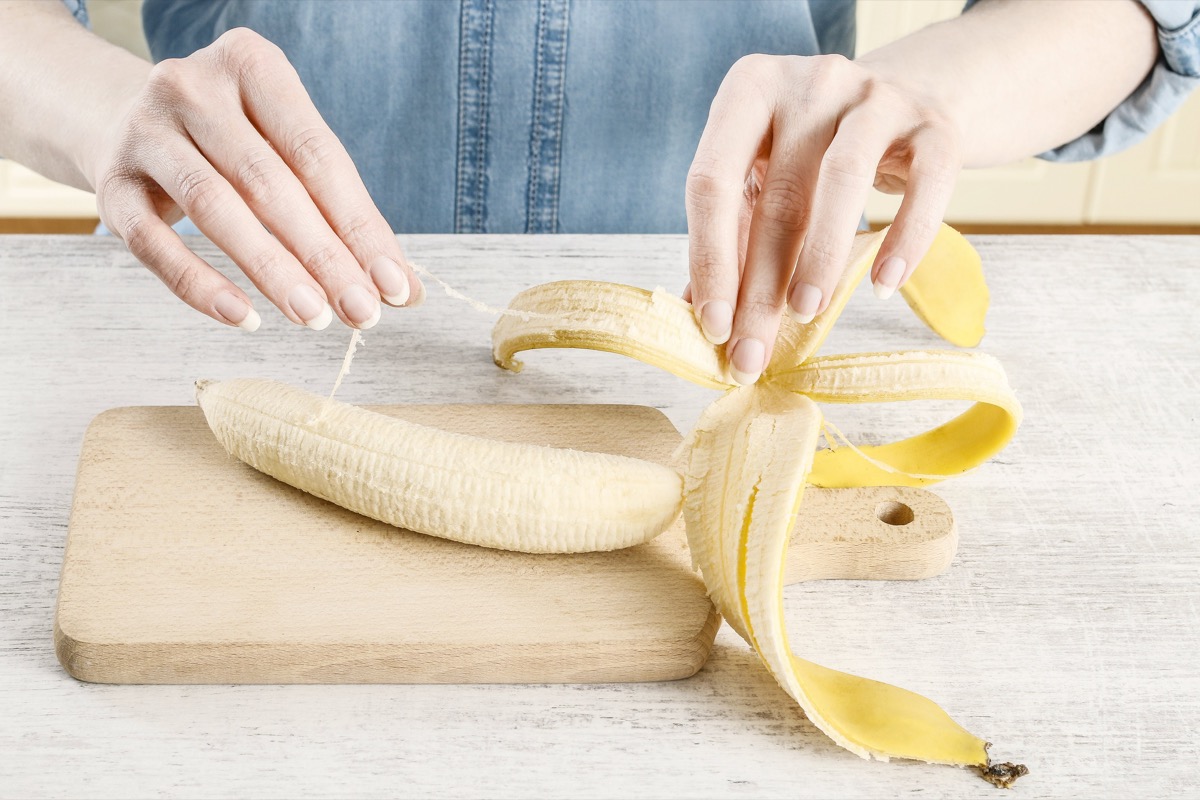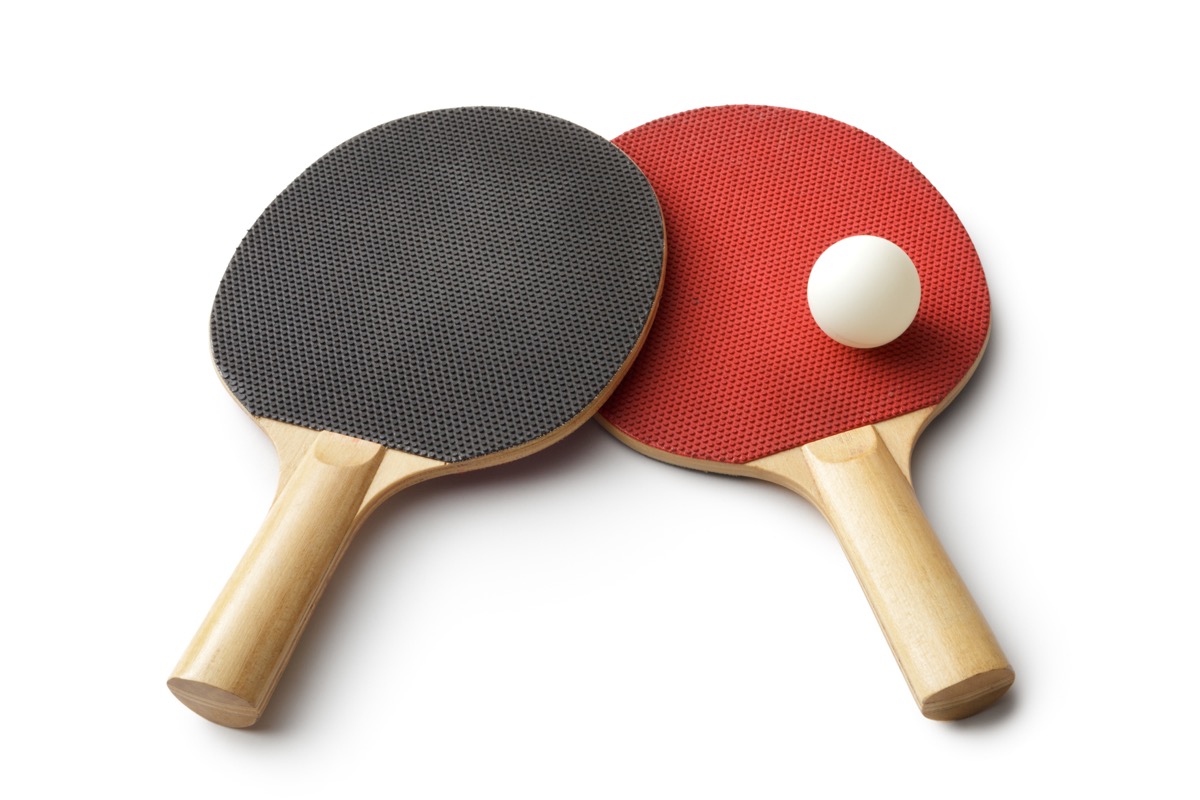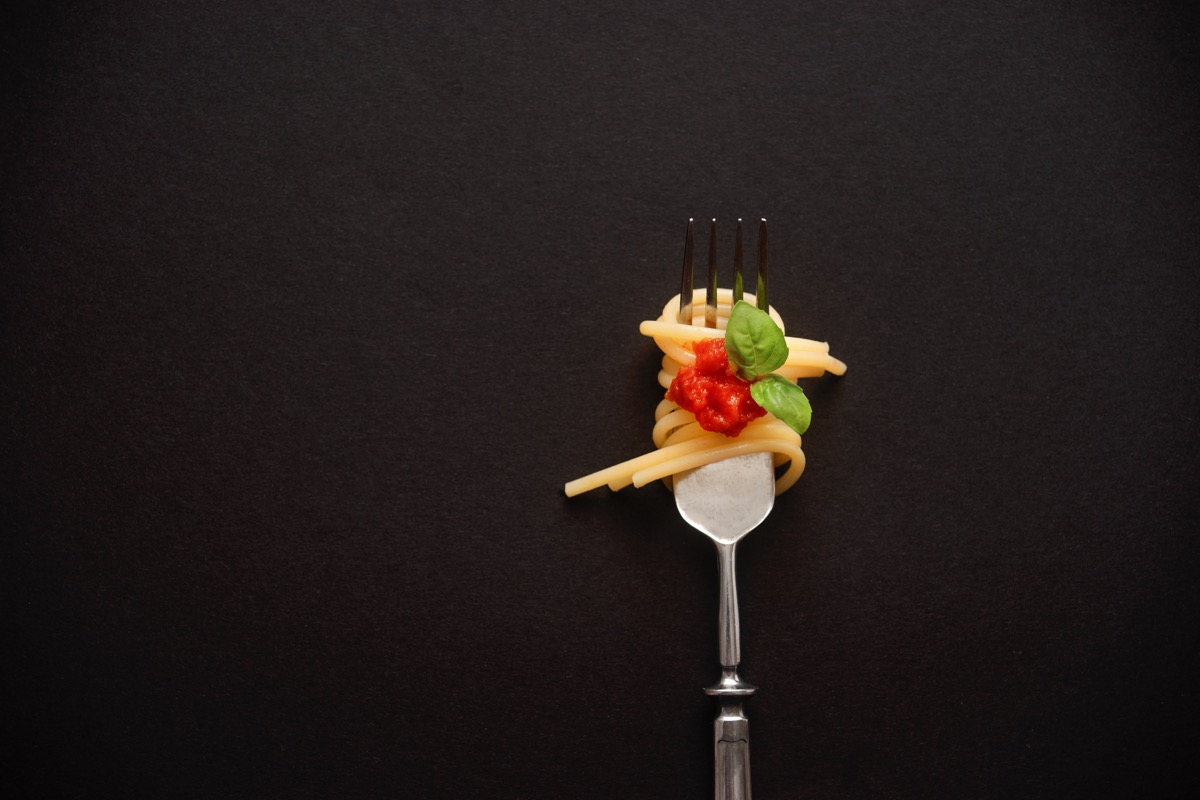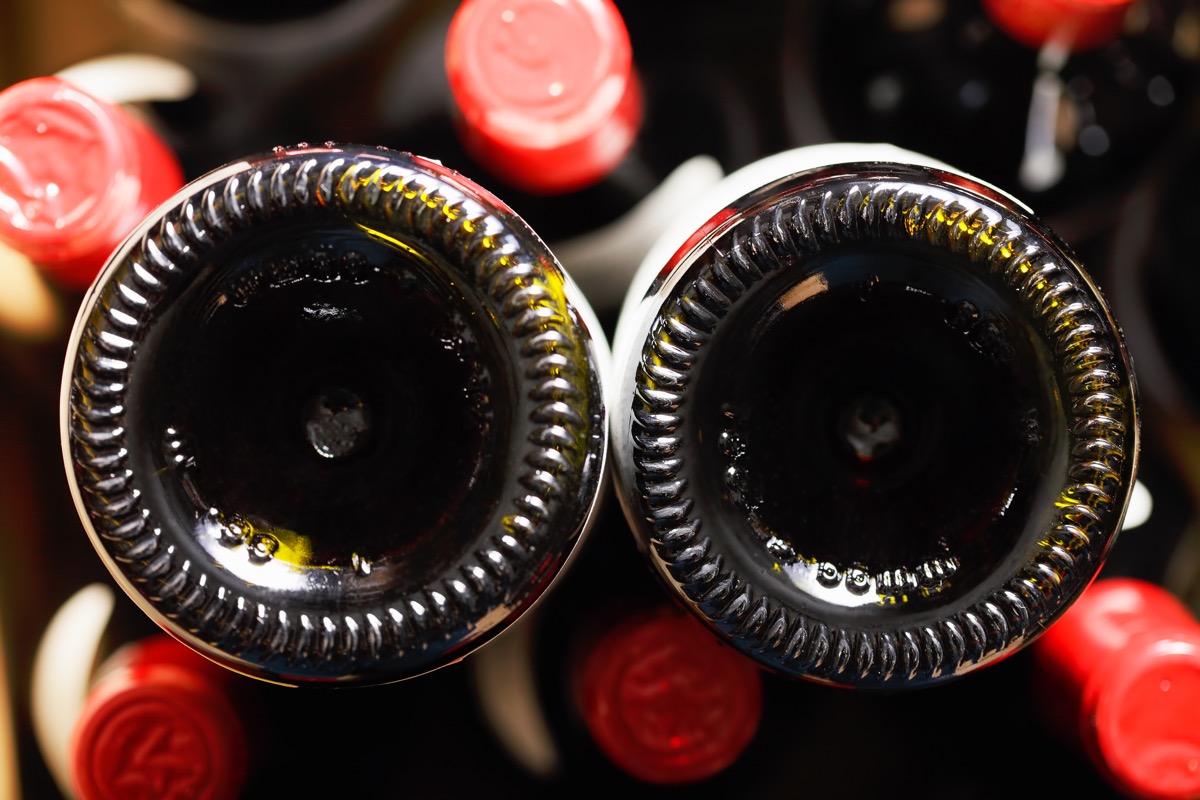40 Everyday Items You Didn't Know Had an Official Name
What's the end of a shoelace called? Learn this and more words you didn't know existed.

There are roughly one million words in the English language, which is more than a little bit daunting. With such a vast vocabulary, it would seem that we should all be able to describe anything in a single word. And yet, there are certain everyday items—the metal part of a pencil, the plastic on the end of your shoelaces, the bumps on a raspberry—that we all trip over. But most of these things actually do have words that describe them—you just don't know them. These are the words for everyday items you didn't realize had official names. And for some surprising word origins, learn 35 Commonly Used Words We Totally Stole From Other Languages.
1
The bits of plastic at the end of your shoelaces

Blink and you'll miss 'em, but those plastic or metal ends of your shoelaces are called "aglets," and they serve an essential function. According to Ian's Shoelace Site, aglets keep your laces from unraveling and even make it easier to lace your shoes up. Can you imagine trying to lace a pair of sneakers with fraying laces? No, thanks! And for more word trivia, here are 40 Facts About Words That Will Blow Your Mind.
2
The metal contraption that holds the eraser to the end of a pencil

That small piece of metal that separates the pencil from the eraser (better known as the part of the pencil that is sometimes chewed beyond recognition) is called the "ferrule." Since the early 1900s, the ferrule has made the process of writing and editing easier—and that's all thanks to inventor Hyman Lipman, who, according to CW Pencil Enterprise, introduced this newer, smarter version of the pencil in 1858. When he sold the patent just a few years later, he scooped up a handsome sum: $100,000 (or about $3 million in today's dollars). And for more on inventors, check out these 15 Common Things You Didn't Know Were Named After Someone.
3
The plastic, pronged item in the middle of most pizzas

All hail the "pizza saver," the plastic contraption that is placed in the center of a pizza that resembles a three-pronged avant-garde side table. Without this invention—which prevents the top of the pizza box from collapsing in at the center and compromising the precious slices within—pizza as you know it wouldn't be the same.
4
The wire cage that keeps the cork in a bottle of champagne

The "agraffe" is the "metal clip used to secure the cork in a bottle of champagne or sparkling wine during secondary fermentation." Basically, the agraffe's purpose is to prevent the cork from emerging under the pressure created by carbonation.
5
The cardboard sleeve on to-go cups of coffee

Though "zarfs" have been around for centuries, the newer, more practical cardboard version was patented in 1991 by Jay Sorensen. After burning his fingers on a cup of coffee, causing him to spill it all over his lap, Sorensen decided to come up with a safeguard. So, coffee lovers have Sorensen to thank for keeping our hands burn-free with zarfs. And for more words that came about recently, discover 40 Words That Didn't Exist 40 Years Ago.
6
The small cup that holds condiments

From the name of these condiment cups, "soufflé cups," you'd think that you'd be consuming something far more sophisticated than mayo, ketchup, or mustard.
7
The loop on the belt that keeps the end in place

After your belt has passed through the buckle, the "keeper," or the last loop on your belt, serves the second-most important function: It ensures that the end of your belt will remain snugly in place. And for words that sound different depending on where you are, check out these 50 Words People Pronounce Differently Across America.
8
The armhole in an item of clothing

As Merriam-Webster explains, "the shape or outline of the armhole" is called the "armscye." Don't feel bad if you've never heard this word before—it's typically only used in tailoring and dressmaking. And for more words you're not familiar with, here are 33 Funny Dictionary Words You Didn't Know Actually Existed.
9
The wooden strips that separate window frames

The small strips of wood, plastic, or metal between individual panes of glass are called "muntins." They're not to be confused with "mullions," however, which are larger horizontal or vertical dividers placed between adjoining window units.
10
The chart you look at while taking an eye exam

Rather than simply referring to this chart as the "eye chart," call it by its real name. The "Snellen chart" is named after Dutch ophthalmologist Herman Snellen, who designed it in the 186os. However, in recent decades, many ophthalmologists having been using another chart, the "LogMAR chart," to determine more accurate vision estimates.
11
The division sign

That's right—it's not just called the division sign. According to Merriam-Webster, it's technically an "obelus." Centuries ago, the obelus was used as an editing tool to mark factually questionable passages in manuscripts.
12
The "You Are Here" mark

Long before the days of Waze and Google Maps, we got around by following maps emblazoned with bright red "You Are Here" markers. (You'll still find these on maps in subway stations, national parks, and museums.) Believe it or not, these markers and signs have a name: "ideo locators."
13
The device they use to measure shoe size in retail stores

Today, you may order a pair of shoes online and pray to the retail gods that they fit like a glove. But back when everyone still shopped at actual brick-and-mortar stores, people measured their shoe size to a tee by using contraptions known as "Brannock Devices." Invented by Charles F. Brannock in 1925, you can still find these at certain shoe stores around the globe.
14
The long strips that appear while peeling a banana

Those pesky, long strings on bananas are called "phloem bundles." You might recognize the word "phloem" from high school biology: It describes the complex tissues that transport food and water to plants, ensuring that they remain well-fed.
15
The pound symbol

No, it's not a "hashtag." As it turns out, the pound symbol actually has a much more official-sounding name. According to Merriam-Webster, the term "octothorpe" is used to describe the pound symbol. "Octo" refers to the eight points, while the origin of "thorpe" is still up for debate.
16
The flesh around a turkey's neck

In case you were curious, that bit of fleshy skin around a turkey's neck is called "snood." And, according to an oft-cited 1995 study in Animal Behaviour, the longer the snood on a male turkey, the more likely he is to find a mate.
17
The bumps on raspberries and blackberries

Blackberries and raspberries are among a class of fruits called bramble fruits, or fruits that are produced by any rough, tangled, prickly shrub. Bramble fruits are aggregate fruits, meaning they're made up of a bunch of smaller units. And those units—the little bumps you see on these berries—are called "drupelets."
18
The bumps on the surface of a ping pong paddle

"Pips" are the "little nubs that protrude from a single side of a rubber," the outside material of a paddle. Pips can vary in size, but experienced players prefer shorter ones, as longer, more pronounced ones don't give players much control over the ball.
19
The groove between your nose and the middle of your lips

Yes, even that vertical groove between your nose and upper lip has a name. This part of your face is known as the "philtrum"—though it seems to have no apparent function aside from giving you a perfect pout.
20
The space between your thumb and forefingers

Originating from Northern England, the term "purlicue" refers to the space between the thumb and forefingers, according to Collins English Dictionary.
21
The space between your eyebrows

If you scowl often, you engage the muscles of the "glabella," or the space between the eyebrows.
22
The inedible parts of food

"Chankings" refer to parts of food that can't be digested and are instead spit out: rinds, pits, seeds, that sort of thing.
23
The lighter, crescent-shaped part of the fingernail

If you've ever wondered what the white, crescent-shaped mark on your fingernail was, wonder no longer! According to Merriam-Webster, this part of the nail is called the "lunule."
24
The prongs on a fork

That's right—those prongs have a name. These pointed ends are called "tines," according to Merriam-Webster. Any fan of the movie Pretty Woman is probably familiar with hotel manager Bernard Thompson (Héctor Elizondo) explaining to Vivian Ward (Julia Roberts) that "sometimes there are two tines."
25
A small dab of toothpaste

When you brush your teeth, you're likely to use a "nurdle," or a tiny, wave-like dab of toothpaste.
26
The outer part of the crust on a pizza

Though some may avoid this part of the pizza entirely, the most zealous pizza lovers will indulge in all parts of the culinary treat, including the "cornicione," or the pizza's outer crust.
27
The foam on top of beer

You could say a poorly poured pint is overwhelmed with foam. Or, you could use the proper term and say that there's more barm than beer in your glass. According to Merriam-Webster, "barm" is the "yeast formed on fermenting malt liquors."
28
The lines on the inside of your wrist

If you've ever taken up the art of palm reading, you might have forgotten to address your "rascette lines," or the transverse lines on the inside of your wrist. Along with the lines that arch across your palm, palm readers believe that these lines by your wrists carry other important messages about your present, past, and future.
29
The dent at the bottom of a wine bottle

According to Wine Spectator, "punts," or the indentations at the bottom of a wine bottle, were first created to ensure that the bottle remained upright without toppling over. At this point, however, they no longer seem to serve a purpose, as wine bottle manufacturers have found ways to reinforce the strength of the bottles without the use of a punt.
30
Your little toe or finger

Instead of simply calling your smallest toes and fingers your little toes or pinkies, sharpen your lingo by calling them by their medical term, "minimus."
31
The space between your nostrils

According to the National Human Genome Research Institute, the tissue that links the nasal tip to the nasal base is referred to as the "columella."
32
The non-gender-specific term for a niece or nephew

For those of you who trip over the phrase, "nieces and nephews," try this alternative: "Nibling," as the Collins English Dictionary defines, is a non-gender-specific term that allows aunts and uncles to use a catch-all phrase.
33
Illegible handwriting

Calling all doctors, lawyers, and journalists—your chicken scratch can now be defined in a single term. According to Merriam-Webster, "careless handwriting" is also referred to as "griffonage."
34
That hard to reach spot on your back

That spot on your back that you just can't reach to scratch? That's called your "acnestis," or the part of the back in-between your shoulder blades.
35
The dot above certain letters

According to Merriam-Webster, the "tittle" is that dot above a letter "I" or "J" in lowercase. You may be tempted to draw a smiley-face tittle every time you write, but leave them out of professional business letters.
36
The infinity symbol

If you're referring to this symbol, you don't need to call it an "infinity symbol." Instead, refer to this figure-eight shaped curve by what Merriam-Webster says is its official name, a "lemniscate."
37
The empty space between the bottle top and the liquid

That space between the top of your drink bottle to the liquid inside? That's called its "ullage," or "the amount that a container lacks of being full."
38
The whiskers on cats

You could simply call them "cat whiskers," or you could call them "vibrissae," which according to Merriam-Webster, are the "stiff hairs that are located on the face and especially about the snout of many mammals."
39
The side of the hammer not used for hammering

Hammers have two sides: one that hammers in objects, like nails, and another that can usually remove nails. This "usually hemispherical or wedge-shaped end of the head of a hammer that is opposite the face" is called a "peen," according to Merriam-Webster.
40
The symbols used to replace profanity

Whenever you see symbols used to replace words that are considered profanity, like "@$#%!," that's known as "grawlix." Merriam-Webster says the term was created by American cartoonist Mort Walker.





















